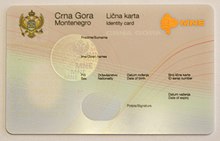Identity document
A version of the passport considered to be the earliest identity document inscribed into law was introduced by King Henry V of England with the Safe Conducts Act 1414.For the Sahrawi people of Western Sahara, pre-1975 Spanish identity cards are the main proof that they were Saharawi citizens as opposed to recent Moroccan settlers.[23] Liberia has begun the issuance process of its national biometric identification card, which citizens and foreign residents will use to open bank accounts and participate in other government services on a daily basis.The card is the only acceptable legal document to obtain employment, a residence permit, driving licence or passport, and to open bank accounts or apply for entry to tertiary education and technical colleges.Since June 21, 2008, NID cards have been compulsory for many things in Iran and Iranian missions abroad (e.g., obtaining a passport, driver's license, any banking procedure, etc.).[citation needed] NICs are not issued to non-citizens, who are still required to carry a form of photo identification (such as a photocopy of their passport or foreign driving license) at all times.The Identification Card is used for virtually all activities that require identity verification within Taiwan such as opening bank accounts, renting apartments, employment applications and voting.[52] National identity cards issued to the citizens of the European Union and European Free Trade Association (Iceland, Liechtenstein, Norway, and Switzerland), which states the bearers citizenship belonging to an EU/EFTA member can use it as an identity document within their home country, and as a travel document to exercise the right of free movement in the EU or EFTA[53][54][55] During the UK Presidency of the EU in 2005 a decision was made to: "Agree common standards for security features and secure issuing procedures for ID cards (December 2005), with detailed standards agreed as soon as possible thereafter.78-2 of the French Code of Criminal Procedure, ID checks are only possible:[72] The last case allows checks of passers-by ID by the police, especially in neighborhoods with a higher criminality rate which are often the poorest at the condition, according to the Cour de cassation, that the policeman does not refer only to "general and abstract conditions" but to "particular circumstances able to characterise a risk of breach of public order and in particular an offence against the safety of persons or property" (Cass.For instance, it is required to perform banking transactions if the teller personnel is unfamiliar with the apparent account holder, to interact with the Citizen Service Bureaus (KEP),[77] receive parcels or registered mail etc.[108] Every Polish citizen 18 years of age or older residing permanently in Poland must have an Identity Card (dokument tożsamości) issued by the local Office of Civic Affairs.Presenting the ID card is preferred but not mandatory when asked by police officers; however, in such cases people are expected to provide a CNP or alternate means of identification which can be checked on the spot (via radio if needed).They issue an internationally recognised id-card according to EU standard usable for intra-European travel, and Swedish passports which are acceptable as identity documents worldwide.Swiss citizens have no obligation of identification in Switzerland and thus, are not required by law to be able to show a valid identity document upon request by a police officer or similar official.The internal passport is commonly considered the only acceptable ID document in governmental offices, banks, while traveling by train or plane, getting a subscription service, etc.As of July 2021, the UK has no national identity card and has no general obligation of identification, although drivers may be required to produce their licence and insurance documents to a police station within 7 days of a traffic stop if they are not able to provide them at the time.The UK had an identity card during World War II as part of a package of emergency powers; this was abolished in 1952 by repealing the National Registration Act 1939.Generally, in day-to-day life, most authorities do not ask for identification from individuals in a sudden, spot-check type manner, such as by police or security guards, although this may become a concern in instances of stop and search[clarification needed – discuss].[citation needed] A few provinces, such as Québec and Ontario, issue provincial health care cards which contain identification information, such as a photo of the bearer, their home address, and their date of birth.Each resident's ID card has a unique number composed of 12 digits; the first three of them indicate their nationality and the rest of them a sequence used by the immigration authority (called Dirección General de Migración y Extranjería).It is usually required to validate job applications, legally binding contracts, official documents, buying/selling real estate, opening a personal bank account, obtaining a Driver's License and the like.[154] The passport card is considered a "List A" document that may be presented by newly hired employees during the employment eligibility verification process to show work authorized status.It is issued as a card (tarjeta DNI) at birth to all people born in the country (and hence citizens), and to foreigners who register as residents with the National Directorate of Migrations.17671 on Identification, Registration, and Classification of the National Human Potential, enacted in 1968, replacing the enrolment document issued to men undergoing mandatory military service and libreta cívica given to women upon turning 18.Internally, it had an identical design to the card format but included spaces for marital status, address changes, organ donations, and the stamping of the DNI after voting in national elections.Manufactured using laser technology on polycarbonate, a durable material, the new document has up-to-date physical security features to enhance visual verification and prevent counterfeiting.[168] In Brazil, at the age of 18, all Brazilian citizens are supposed to be issued a cédula de identidade (ID card), usually known by its number, the Registro Geral (RG), Portuguese for "General Registry".[171] In Peru, it is mandatory for all citizens over the age of 18, whether born inside or outside the territory of the Republic, to obtain a National Identity Document (Documento Nacional de Identidad).The front of the card presents photographs of the holder's face, their name, date and place of birth (the latter in coded form), gender and marital status; the bottom quarter consists of machine-readable text.Despite Venezuela being the second country in the Americas (after the United States) to adopt a biometric passport, the current Venezuelan ID document is remarkably low-security, even for regional standards.

Compulsory ID cards
Non-compulsory ID cards








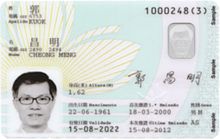
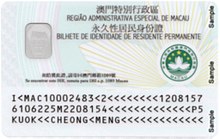





























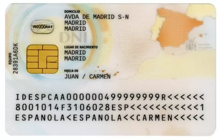




















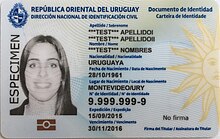

List of national identity card policies by countryIdentity Card (disambiguation)ID (disambiguation)ArgentinaHungarySouth Africadocumentidentityplastic cardportraitphoto IDdatabasefull namebirth dateaddresscitizenshipnational identification numberdriver's licenseidentity verificationpassportspassportKing Henry V of EnglandSafe Conducts Act 1414First World Warphoto IDsLody spy scandalISO/IEC 7810smart cardsISO/IEC 7816technologiesbiometricphotographfingerprintselectronic identity cardsLaw enforcementAustraliaCanadaIrelandNew ZealandUnited KingdomUnited Statesprivacycivil libertiesOpen Universitycentral governmentidentifiergenetic profilefreedom of movementPropiskaFranceVenezuelaU.S. federal policyprivate sectorracial profilingPrivacy Internationaldetentionfare evasionAndorraBahamasTuvaluschemePassport CardsDepartment of Motor VehiclesSahrawi peopleWestern Saharaself-determinationreferendumqualificationtaxicab driversdrug screeningQueenslandWestern Australiabackground checkBlue CardCartão Nacional de Identificação (Cape Verde)Cape VerdeArabicdaily colloquial speechlandline telephonegrantsGambian citizensGhana CardcitizensNational Identification AuthorityBilhete de identidade (Mozambique)MozambiqueSouth African identity cardSmart IDmobile phonefirearms licencesNational Health InsuranceZimbabweansAfghan identity cardTazkiraGulf Cooperation CouncilBangladeshi national identity cardBangladeshResident Identity Card (PRC)Hong Kong Identity CardImmigration Department of Hong KongBasic Law of Hong Kongright of abode in Hong KongIdentity documents of IndiaAadhaarration cardsIndonesian identity cardIndonesian citizenforeign nationaliris recognitionIranian identity cardShenasnamehIranian identity bookletPersiangiven namesurnameNational Identity CardMinistry of InteriorBirth CertificateIraq National CardNational CardTeudat ZehutHebrewJapanese driver's licenseindividual number cardZairyū cardsKazakh identity card


